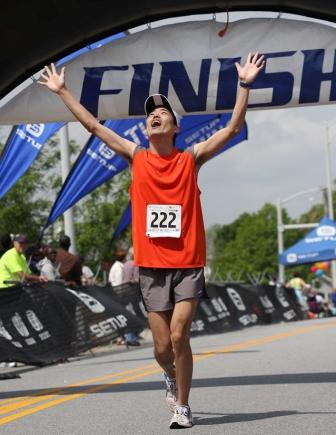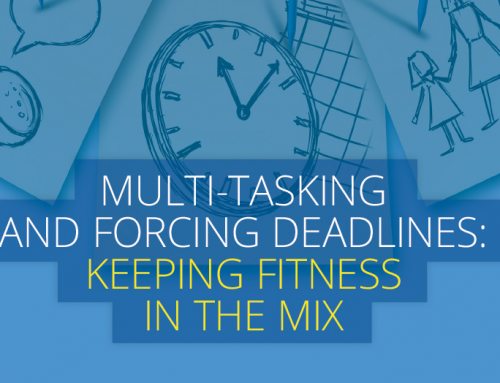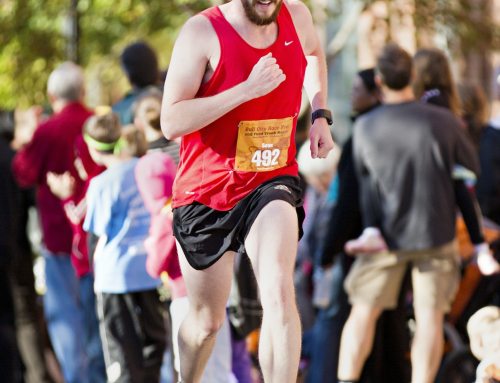 By Brennan Liming
By Brennan Liming
New Year’s Day is a great time for resolutions, but if you’re planning to run your first marathon in 2010, you better not wait until January 1st to start training. With autumn upon us, the countdown to a Spring 2010 marathon is quickly approaching. While an on-line promise of 16 to 18 weeks for marathon success may sound appealing, it’s not that realistic if you’re currently not running on a regular basis. But don’t worry, autumn in North Carolina is the perfect time to start gearing up for the 16 weeks of training you’ll need to make it to the finish of your first marathon.
For first-timers, beginning from little or no activity to running any kind of mileage may lead to injury as your muscles are not accustomed to the pounding running incurs. And, no matter where you begin, marathon training is tough on the body. If you are able to gradually build your mileage approximately 10% per week over a longer period of time rather than jumping head first into a program, your potential for injury decreases significantly.
Plus, getting a jump start on training will make the marathon seem not so colossal of a task. It is often said that running is 90% mental and 10% physical. If you can push that mental hurdle lower, you are on the right track. Adding one mile to your long run per week is a good place to start. Once you are able to conquer 5, 10, then 15 miles, you are on your way!
Finally, beginning some activity prior to a structured program will provide for a good foundation. Your infrastructure will be stronger, and you will be able to handle the stressors of marathon training easier. Also, beginning with a good foundation may allow you to increase the pace in which you train and race.
With that said, what kind of running should you do to prepare yourself? This largely depends on your current level of activity, your life schedule, and your injury history. I would recommend beginning a workout program with some variety. Building up to running 3-4 days per week with some cross training mixed in is a good scenario. This will allow for flexibility in your schedule and rest for your legs. Cross training may include biking, swimming, Pilates, strength training, or yoga.
I would recommend adding some “turnover” to your runs when you get to a comfortable point in your training. Increasing your “turnover” (steps per minute) can be done through strides, fartleks, and pick-ups, which are a few of the most common turnover-type workouts you may include in your weekly runs.
Strides are gradual pick-ups that work on increasing your turnover without taxing your legs. Simply find a flat area after your run, and run for 100-150 yards at 80-90% effort. Maintain good running form, and practice leg speed. Repeat this 4-5 times, and recover for 20 to 30 seconds between each stride. A fartlek or “speedplay” is a run where you vary your intensity frequently. For example, run a warm-up of 1-2 miles. Then increase your speed for a designated amount of time, usually 1-3 minutes. Recover between each interval by walking or running for approximately half of the interval time. Repeat this 3-4 times. Pick-ups are similar to fartleks and strides. At the end of a recovery or steady run, pick up the pace for 1-2 minutes a few times in order to add a little speed to your run. Recover for 1 minute between each pick-up. These pick-ups should not be fast, but simply a change in rhythm.
All three of these workouts will ease your legs into speed while providing diversity to your runs. Whether or not your marathon training program includes speed, you muscles will better adapt to the mileage workload if turnover has already been incorporated earlier on.
Only you can determine the training that best fits your individual needs, but preparing ahead of time may make your marathon experience from start to finish a more enjoyable one.
# # #
A former NCAA Division I collegiate runner, Brennan continues to compete in local and national running races. Brennan has coached triathletes and runners for over 3 years. Brennan lives in Apex with her husband, Douglas, and their two boys, Luke, 3, and Chase, 1. To contact Coach B, go to http://www.runningb.com/.





